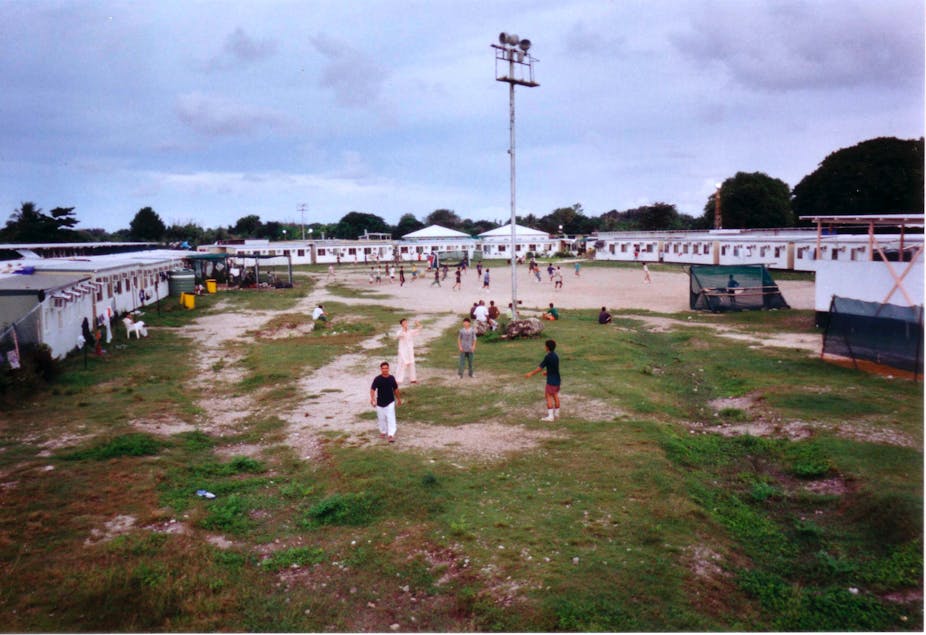Recent debates on asylum seeker problems have revolved around two approaches that are not going to work.
The opposition’s Nauru solution is not going to get people off boats. It is part of the process by which they get to Nauru which many will regard as a stepping stone to come to Australia. Of those who previously did go to Nauru, 70% were resettled in Australia and in New Zealand. Nauru damages people, is not a deterrent and is expensive. The Pacific Solution, which saw asylum seekers detained on Manus Island and Nauru, cost more than $1 billion over five years, or $500,000 per person.
The government’s Malaysian solution is no better. It still requires people to come to Australia by boat; 800 people who come here are going to be sent to Malaysia and then are going to be traded for 4000 proven refugees, 1000 a year for four years. It is a short-term policy because those numbers are finite, at least in terms of what has been said publicly. If the 800 in number are exceeded, what happens to them? If as the government believes, that the number of 800 will not be reached because the policy will be a deterrent, it implies that those who are sent to Malaysia will not get any protections or any of the rights that should be accorded to refugees.
If the main objective is to save lives and to stop people getting on dangerous boats, it is clear that we need to resource the UNHCR offices to increase resettlement and processing in Indonesia and Malaysia, starting with an immediate increase in the number of people Australia resettles from Indonesia.
This year, we have only resettled 61 people from the 1,200 recognised refugees in Indonesia. Increasing the number of people we resettle from Indonesia and Malaysia is the only way to stop people getting on boats. The program should be run and managed to the maximum extent by UNHCR with funding from the Australian government. Under UNHCR management, Indonesia could have as much involvement as it wished.
For the policy to be effective, we should increase the number of humanitarian refugees that we are prepared to take to at least 25,000. Increasing Australia’s humanitarian intake is something the three major political parties agree on, so why not implement this immediately?
We also need to resettle those waiting for family reunion as soon as possible. After that, family reunions could be part of the 25,000 humanitarian intake.
It wouldn’t hurt Australia to show a little generosity and say that we will get rid of that backlog of 20,000 for family reunion as quickly as possible. If we really wanted to, we could probably do it in a year.
If these suggestions could be put into effect, it would mean that refugees in Indonesia would be treated decently, humanely and in accordance with international conventions. It would also mean that we would put ourselves within the law in Australia and within the provisions of the Refugee Convention.
Some may argue that there is no element of deterrence in this policy. This is where Australia started to make a major mistake by believing that a democratic country such as Australia with a strong humanitarian record and a largely compassionate population, would be able to provide a deterrent that equalled the terror and oppression from which most refugees have been fleeing from a number of countries.
Whether asylum seekers are fleeing the Taliban in Afghanistan or the terror perpetrated by both sides in Sri Lanka, it is inconceivable that an Australian government could match the brutality and fear caused in their homelands. This is why the policy of deterrence has not worked, and will not work.
The opposition has claimed the policy of deterrence worked in earlier times. That is highly debatable because while the numbers coming to Australia on boats did fall, the numbers going to Europe on boats also fell dramatically and proportionally just as much, if not more. At that time, no country in Europe had applied a policy of deterrence. The decrease in boat arrivals was due to geo-political factors such as the fall of the Taliban in 2001.
A second stage would involve the internationalisation of what is a local regional approach. We should seek to persuade the United States, Canada, New Zealand and other recipient countries to take more refugees and particularly to take some from the holding centres in Indonesia if the numbers continued to rise.
If Australia has already acted with generosity and effective diplomacy on stage one, it could make this achievable. That’s exactly what happened in relation to a very much larger intake of refugees from Indo-China in the late 70s and early 80s.
Then, Malaysia was pushing boats out to sea. Many were river boats that could not survive at sea, especially the long journey through Indonesia to Australia.
To stop Malaysia pushing people out to sea it was necessary to persuade them to establish a centre to have people processed there. This was only possible because of the commitment we and many others made to take many tens of thousands from that centre. That worked. The countries that took large numbers of Indo-Chinese and Vietnamese have all benefitted economically and culturally as a consequence and that applies with special emphasis to Australia.
The short- and long-term measures outlined above will save money, do not require legislative changes and will save lives at sea.
The idea of protecting asylum seekers seems to have been lost from the current debate and it’s time to restore this protection as integral to our approach.
This is an edited version of Malcolm Fraser’s submission to the government’s Expert Panel on Asylum Seekers.

